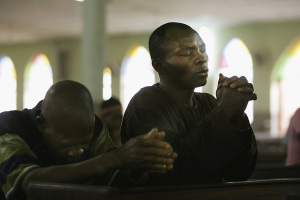El Niño 2017: What Is It? Will It Arrive This Year?
A weather forecaster for the United States government reported last week that El Niño might not happen through fall this year. Despite that, the chances for this weather condition are still pegged at 35 to 50 percent, according to the National Weather Service's Climate Prediction Center.
El Niño is one of the two phases of the El Niño-Southern Oscillation cycle, which begins near the equator somewhere in the Pacific Ocean. Of the two parts of the cycle, El Niño is the one characterized by warmer water temperatures in the area. This natural occurrence extremely impacts the weather patterns in North America.
CPC Deputy Director Mike Halpert recently explained to International Business Times how the ENSO cycle impacts water and food supplies. "When the ocean temperatures become warmer or colder than average, they impact the patterns of tropical rainfall, and that change in the pattern of rainfall impacts heating into the atmosphere, which ends up impacting the jet stream across the Pacific Ocean.," he said.
One of the strongest El Niño cycles happened during the winter of 2015-2016. This brought heavy rainfall and wind shear across the United States, and the effects felt by the people depended on their locations. Usually, the warmer and dryer areas are those located in the northwestern part of the U.S., while the colder and wetter are those in the southeast.
Although the El Niño cycle involves weather patterns, Halpert emphasized that no two El Niños can be exactly the same. He said that while this natural occurrence tremendously impacts seasons, it is not the sole factor that affects seasonal variability. Also, even when climate models are used, it is difficult to figure out early on whether an ENSO event is taking place or not.
Based on the latest forecast from the CPC, neither El Niño nor La Nina is about to develop through the fall in the Northern Hemisphere so people might have to wait for the next update to know if the condition is likely to arrive soon.




























